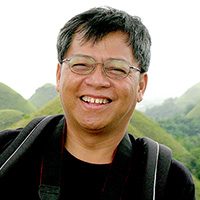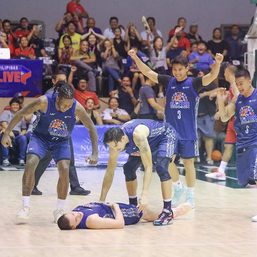SUMMARY
This is AI generated summarization, which may have errors. For context, always refer to the full article.

A lot of Filipino-American parents may want their children to be at home in, as it were, a new place, but deep down they also hope that “some Filipino culture” (e.g., religiosity) would be passed on to them.
There is nothing wrong with all this, unless the trajectories of their lives make an interesting turn.
First, the elders decide they have had enough of the crass individualism of American life and agree that it was time to go back to the lupang tinubuan to spend the last days of their golden years. They want to be Filipino again, to return to the comforts of a society that privileges community and family solidarity – two traits that are now extinct in the United States.
In Filipinas, they get a chance to re-experience these desirable cultural habits as they move steadily to their demise. Moreover, they could do so assured of a life of ease, thanks to a hefty retirement fund.
This often puzzles the offspring over why Dad or Mom came here in the first place, work hard so that their children can become thoroughly American, and then, in their senior years, fly the coop and leave the now-adult kids to their own devices.
I often encounter Filipino-American students of mine trying to figure out this contradictory pilgrimage. As one of them told me, “I cannot understand why they want to go back to the place which they condemned as bad, poor, and not conducive to raising a family.”
The senior reaction, of course, is not to acknowledge this perplexity of the young. They are, after all, the parents, more experienced and wiser, while the latter, well, the exact antipodes.
Disregarding the opinions of the young, however, can bring about unintended consequences. And this is the second point that is worth some discussion here. It is dangerous not to recognize and to respond to these views, for if parents are unable to provide a convincing answer to the puzzle above, then the young will be compelled to seek the explanation elsewhere.
And they may just find it in the school system that has responded to the growing number of young Hispanic- and Asian-Americans by introducing more “heritage courses.” Where Filipino language enrollment was sparse and pathetic in the past, these days you have a virtual explosion of enrollments in primary and advance Tagalog.
New classes on Philippine history and culture inevitably complement linguistic curiosity. Once just mere appendages to China- or Japan-dominated “Asian civilization” courses, Philippine and Filipino studies have been able to carve their own spaces in academia.
This is a result of the intertwining of 3 threads: first, pressures from undergrad Fil-Am kids for these courses to be taught; second, opportunistic university bureaucrats sensing revenue-generation potentials from these new undergraduate market; finally, there is the hiring of a cohort group of young Filipino-American and Filipino academics, many of them sympathetic to Filipino nationalism and thus completing dissertations on topics like “the US Empire in the Philippines.”
These heritage classes deepen knowledge by going beyond the formalities of Filipino culture that includes the dull dancing of the tinikling. A Filipino-American kid now sees her parents’ immigration as spurred by American hegemony as well as their desire to find their pot of gold.
The glimpse back at the history of the “US empire in the Philippines” would also lead to the discovery of Filipino nationalism – the writings of Jose Rizal, the revolutionary commitment of Andres Bonifacio, the never-ending resistance of the Moros of Mindanao. The parents painted America as a benevolent democracy; the children see it as a malevolent entity that brutalized and dominated a nascent Asian Republic.
Popular culture and sports then put the icing on the cake. This is not anymore a case of Filipinos being brainwashed on everything white American. Cultural osmosis becomes a two-way street now, as evidenced by the mutual admiration between hip hop artists from both sides of the Pacific, and of YouTube videos posted by Fil-Ams instructing watchers the proper Filipino or reposting Gary Granada’s and Joey Ayala’s canzonets.
The same holds true with sports. Today’s PBA is not just the oasis of 4th-rate players who could not even get to the NBA’s farm teams, but the training ground for those aspiring for a slot in the USA’s top league. However, these players have also committed themselves to help regain the country’s pre-eminence in Asia, and if the recent international basketball tournaments are an indication, they do it with heart.
Suddenly the child who is supposed to grow up 95% American now wants to visit and spend much time in the home country. She wants to know what being Pinoy is all about. Long-distance nationalism seems to be at play here with the young. In the case of their elders, it is just a re-inserting themselves into the communities they abandoned.
What happens if these two contrasting trends continue is worth our following them. – Rappler.com
Patricio N. Abinales is an overseas Filipino worker. He teaches Asian Studies at the University of Hawaii.
Add a comment
How does this make you feel?





There are no comments yet. Add your comment to start the conversation.